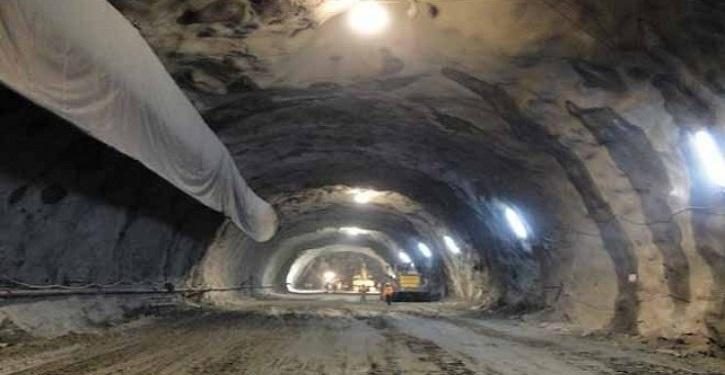Mumbai: The Rs 4,000-crore ‘Rohtang Tunnel’, is ready for opening next month following the completion of civil works. The ‘Rohtang Tunnel’ had been under construction for more than a decade now. However, it is now functional officials said here Thursday. The tunnel is the world’s longest motorable roadway at an altitude of over 3,000 metres.
The tunnel will be opened by Prime Minister Narendra Modi by mid-September. This was disclosed by Satish Paretkar, Director of Hydro & Underground business unit at Afcons.
The Rohtang Tunnel is a joint venture of Shapoorji Pallonji Group-run Afcons and Strabag of Austria. They won the Engineering Procurement & Construction (EPC) tender for Rs 1,458 crore from Border Road Organisation in 2009.
The cost of the project has crossed Rs 2,500 crore now, said Paretkar. The civil works started in 2009 and was to be completed within 6.5 years.
Paretkar said the exact date of opening of the tunnel is yet to be finalised.
The 9.02 kilometres-long ‘Atal Tunnel’, named after former Prime minister Atal Bihari Vajpayee, passes under the Rohtang Pass. It is in the eastern Pir Panjal range on the Leh-Manali highway at an altitude of 3,060 metres. The tunnel is 10.5 metres wide and has a height of 5.52 metres and a car can zip through at 80 kmph.
According to Paretkar, the horseshoe shaped single-tube, double-lane tunnel has many firsts. With a length of 9.02km, it is the longest in the world at an altitude of over 3,000 metres, he said. Further, it is also India’s first tunnel to have an escape tunnel within the main tunnel because of the topography. Globally, escape tunnels are built separately along the main tunnel.
This is also the first tunnel to deploy the Rowa flyer technology, which allows engineers to work at inverted levels, he said.
Paretkar said the delay in completion of the tunnel was mainly due to the 410-metre long Seri Nalla, a brook. “Seri Nalla was emitting over 125 litres of water per second, making work really hard. In my entire engineering life, this was the toughest job to execute. It took us more than three years to drill 410 metres along the Nalla,” he said.
Afcons deployed over 1,000 workmen and 150 engineers. The engineering design was done by Australian Snowy Mountain Engineering Company.
The tunnel has consumed 14,508 metric tonne of steel and 2,37,596 metric tonnes of cement, and excavated out 14 lakh cubic metres soil and rocks, using the drill and blast technique for excavation and the New Austrian Tunnelling method for construction, Paretkar said.






































